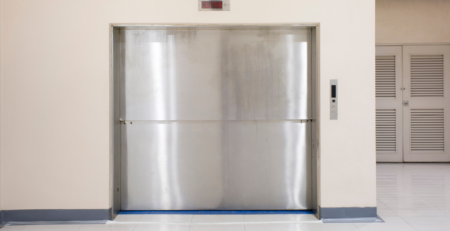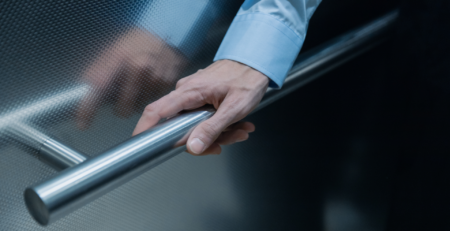Understanding the Basics: How Do Elevators Work?
Elevators are statistically the safest way to move, facilitating an average of four daily trips. We all take them for granted, gliding effortlessly between floors in towering buildings. But have you ever paused to think, “How do elevators work?”
Elevators quietly carry us to breathtaking views and bustling offices alike. But beneath the sleek buttons and polished doors lies a fascinating web of technology. A symphony of cables, weights, and motors working together to make our vertical journeys smooth and safe.
Buckle up because we’ll explore the science behind their silent ascent in this article. We’ll also answer all your burning questions about these everyday marvels. Read on for more insights:
The Anatomy of an Elevator
If you’re wondering how an elevator works, it is a symphony of components in perfect harmony. It comprises cables, pulleys, and a control system, taking you on a safe and fascinating journey through a building. Discussed below are these individual components:
The Elevator Car
The elevator car is a gleaming metal carriage, ready to embark on a vertical voyage. As you enter this carriage, polished floors greet your feet, inviting you to relax and enjoy the ride. Gleaming buttons line the wall, each one a portal to a new floor.
There’s also an ever-watchful emergency stop that stands guard, ready to bring things to a controlled halt if needed. As you stand, the car shields you from the bustling world outside. The gentle hum of the motor becomes a comforting soundtrack, and the smooth ascent feels like a graceful dance through the air.
Elevator Shaft
The elevator shaft is a sturdy metal tunnel built to guide the elevator car carefully. It’s a secure haven for your upward and downward journeys. The shaft’s smooth walls act like a well-oiled track, allowing the car to glide effortlessly.
But safety, not speed, is its top priority. Hidden within the shaft is a network of watchful eyes: sensors that monitor every movement and the elevator brake. These components stand ready to bring the car to a gentle halt if needed.
The Counterweight
Ever wondered why your elevator ride feels so effortless? You can thank the counterweight: a heavy block hanging on the other side of the cables. The counterweight acts as a balancing act, making your journey smoother and more efficient.
While the motor is at work, it takes a lot of energy to raise the elevator. And here’s where the counterweight steps in. As the car rises, the counterweight gracefully descends, balancing out the load and letting the motor use less energy.
Cables
Elevator cables are thick braided strands of steel, strong enough to hold several cars without breaking. They connect the elevator car and the counterweight. When the motor in the engine room is running, it powers these cables, pulling the car upwards with immense force.
The Sheave
The sheave is a giant grooved wheel that redirects the cables’ movement. As the motor powers up, the sheave spins, guiding the cables to either pull the car upwards or release it for a smooth descent. It dictates the direction and pace of your journey with every turn.
The Engine Room and the Control System
The muscle behind the movement lies in the engine room, either an electric motor or a hydraulic system. These engines push and pull, sending us soaring or gently lowering us back down. The engine room consists of powerful pistons pumping or coils humming with electricity.
The control system is the clever computer brain keeping track of everything. Elevator technicians control button presses, floor selections, and elevator maintenance tasks from here.
An Overview of the Types of Elevators
While elevators may have a similar anatomy, they are not always used for the same purpose. Learn about the different types below.
Passenger Elevators
The most familiar face of the elevator family, the passenger elevator, is the friendly giant of the bunch. Built for comfort and speed, these sleek beauties ferry you between floors effortlessly. Whether you’re going to a bustling office or a cozy hotel, these elevators glide past panoramic windows.
Freight Elevators
Behind the scenes, the unsung heroes of the commercial world are the freight elevators. These sturdy giants, clad in steel, are built for heavy lifting. Think mountains of deliveries, tons of equipment, or even entire cars, which these silent workhorses handle with unwavering strength.
Service Elevators
Efficiency and precision are the strengths of service elevators. Designed for maintenance crews and building staff, these agile companions easily navigate tight spaces and hidden corners. You can use them to reach a rooftop antenna or deliver supplies to a secluded basement.
Specialty Elevators
Specialty elevators like car elevators in parking garages, dumbwaiters in restaurants, and even inclined elevators on steep hills each play a crucial role in our modern world. They adapt to unique needs and conquer even the most challenging terrains.
The Future of Elevators
Modern elevators are becoming a smart travel companion, brimming with futuristic tricks. We’re evolving to a world where elevators recognize us, remember our floor, and even play our favorite music. These features sum up the magic of personalized elevator functions and experiences.
But it’s not just about feeling pampered. These smart elevators are learning to talk to each other, optimizing traffic flow and reducing waiting times. As a result, there’s less standing around and more swift ascent to your destination.
And let’s not forget about the environment. Green elevators are on the rise, powered by energy-efficient systems and regenerative brakes. They are good for your time and the planet – a win-win situation.
The future holds some pretty mind-blowing possibilities. Elevators may glide not just vertically but horizontally, connecting buildings like magic walkways. They may feature voice-activated travel or even mind-controlled buttons.
How Do Elevators Work? Summing It Up
We hope this guide answers the question, “How do elevators work?” From counterweights balancing the ride to cables pulling you up, elevators are engineering marvels. They work silently behind the scenes to whisk you wherever you need.
City Elevator of Michigan has the expertise and passion to keep your building’s vertical transportation running smoothly and safely. We fix, inspect, install, and modernize all things elevators in Detroit, MI, with guaranteed best prices on repairs. Let our specialists connect you with the perfect elevator solution for your Detroit building.

Sam Bruno is the driving force behind City Elevator, elevating the standards for elevator installation, maintenance, and modernization services. With an extensive background in mechanical engineering and a deep understanding of elevator systems, Sam has positioned City Elevator as a trusted provider of innovative and safe vertical transportation solutions. His commitment to excellence and safety ensures that every project delivers not only on functionality but also on reliability and design, enhancing the user experience for buildings of all types.






